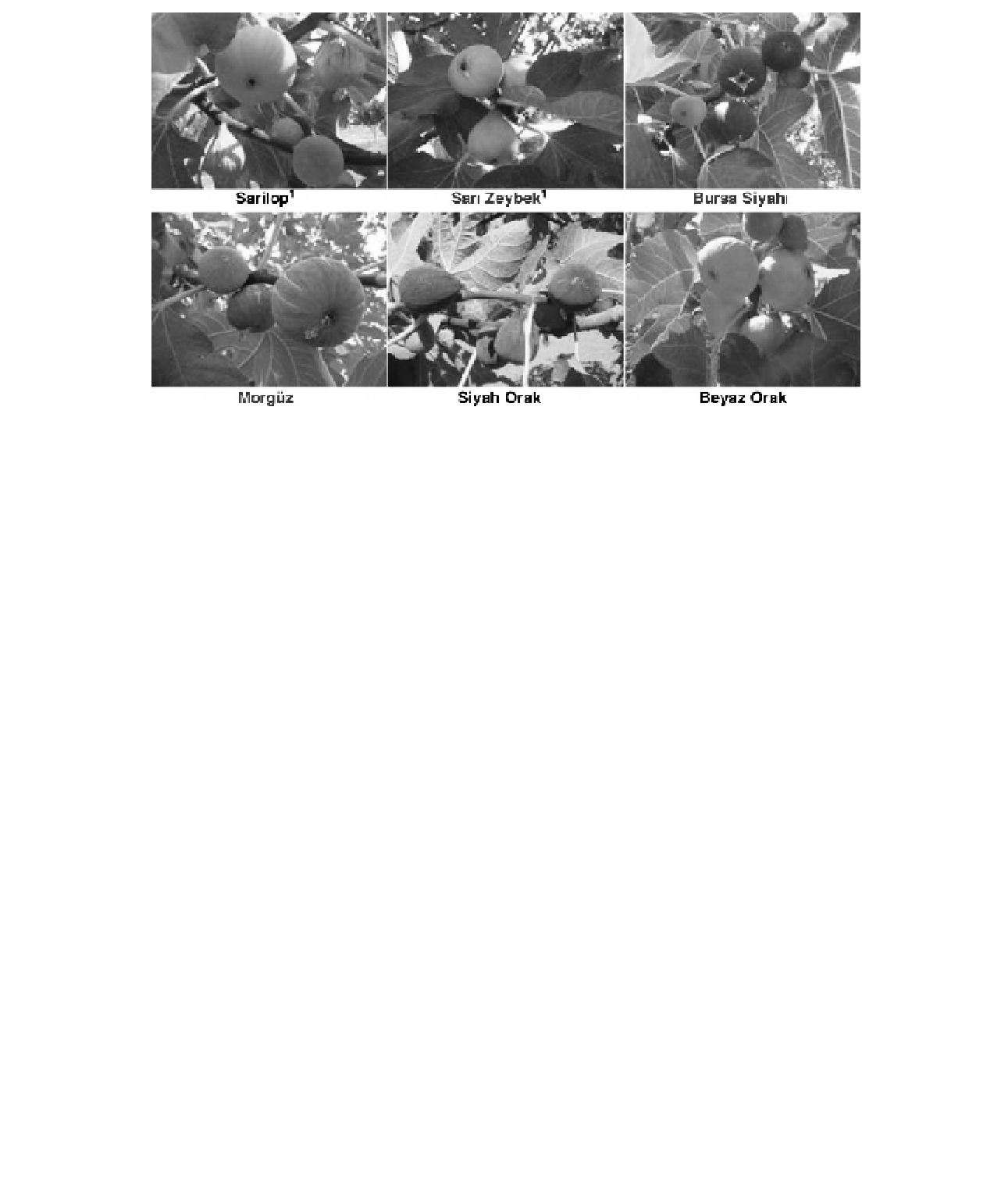Agriculture Reference
In-Depth Information
Figure 24.2.
Figs on tree for selected cultivars grown in Turkey (
1
intended for drying). For color detail, please
see color plate section.
The evaluation of fresh cultivars in Europe and the United
States combined with improved cultivation practices and
better fresh fruit postharvest practices have opened new
prospects for fresh and dry fig production (Tous and Fer-
guson, 1996; Aksoy, 2005).
unripe” (Morton, 1987) to “beginning of softening” (Tous
and Ferguson, 1996).
A ripe fruit will be slightly soft and starting to bend at
the neck. According to Crisosto and Kader (2004), fresh
market figs must be harvested when almost fully ripe and
firm to be of good eating quality. Skin color and flesh firm-
ness are dependable maturity and ripeness indices: 'Black
Mission' figs should be light to dark purple rather than
black and should yield to slight pressure. 'Calimyrna' figs
should be yellowish white to light yellow and firm. Opti-
mal picking criteria for successful airfreight shipment of
summer crop 'Brown Turkey' figs from Israel to Europe
were firmness (resilient to soft) and color (70-90% purple
with background color light green to yellowish). Harvest in-
dices were different for the same cultivar picked in autumn
(Rodov et al., 2002). Harvesting 'Bursa Siyahı' figs before
full ripeness (firmness of 3.7 N/cm
2
vs. 1.5 N/cm
2
in a ripe
fruit) extended their storage potential from 4 to 6 weeks but
did not allow the fruit to achieve optimum quality (T urk,
1989; Celikel and Karacalı, 1998). Nonetheless, the quality
attained was somewhat higher than that of many cultivars
available in the market.
Applications of ethylene as 2-chloroethylphosphonic
acid (ethephon) are known to enhance fruit development,
resulting in early and compact ripening. The application of
ethephon accelerates ripening, thus shortening the harvest
period by as much as 10 days (Ito and Sato, 1987). Proper
Harvesting
Freshfigsarepickedwhentheybegintosoften,andthe
color change indicates maturity. Since fresh figs ripen irreg-
ularly, picking should be done daily during the long harvest
period (4-6 weeks). Figs must be allowed to ripen fully
on the tree before they are picked. They will not ripen if
picked when immature. Since fresh figs ripen sequentially
along the shoot, picking should be done repeatedly dur-
ing the harvest period. The selective harvesting of suitable
fruit demands experienced and trained pickers. A simple
portable firmness tester may be adjusted to train harvest
teams and to adjust their picking criteria (Rodov et al.,
2002).
The figs picked at an underripe stage do not reach a desir-
able flavor, even if they are stored for long periods (Aksoy,
1997; Rodov et al., 2002). However, fruit harvested too late
is prone to fast deterioration and has a short market life. The
optimal harvest maturity may be quite variable, for exam-
ple, from “fully ripe stage” (Aksoy, 1997) through “almost
fully ripe” (Crisosto and Kader, 2004) or from “slightly

Search WWH ::

Custom Search